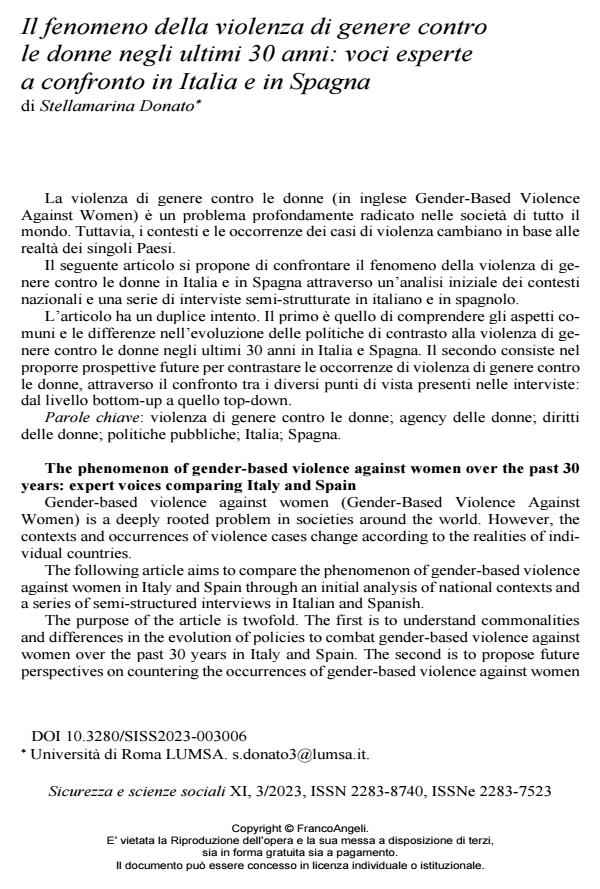The phenomenon of gender-based violence against women over the past 30 years: expert voices comparing Italy and Spain
Journal title SICUREZZA E SCIENZE SOCIALI
Author/s Stellamarina Donato
Publishing Year 2024 Issue 2023/3
Language Italian Pages 18 P. 83-100 File size 337 KB
DOI 10.3280/SISS2023-003006
DOI is like a bar code for intellectual property: to have more infomation
click here
Below, you can see the article first page
If you want to buy this article in PDF format, you can do it, following the instructions to buy download credits

FrancoAngeli is member of Publishers International Linking Association, Inc (PILA), a not-for-profit association which run the CrossRef service enabling links to and from online scholarly content.
Gender-based violence against women (Gender-Based Violence Against Women) is a deeply rooted problem in societies around the world. However, the contexts and occurrences of violence cases change according to the realities of individual countries. The following article aims to compare the phenomenon of gender-based violence against women in Italy and Spain through an initial analysis of national contexts and a series of semi-structured interviews in Italian and Spanish. The purpose of the article is twofold. The first is to understand commonalities and differences in the evolution of policies to combat gender-based violence against women over the past 30 years in Italy and Spain. The second is to propose future perspectives on countering the occurrences of gender-based violence against women by comparing the different viewpoints in the interviews: from bottom-up to top-down level.
Keywords: gender-based violence against women; women’s agency; women’s rights; public policies; Italy; Spain.
Stellamarina Donato, Il fenomeno della violenza di genere contro le donne negli ultimi 30 anni: voci esperte a confronto in Italia e in Spagna in "SICUREZZA E SCIENZE SOCIALI" 3/2023, pp 83-100, DOI: 10.3280/SISS2023-003006